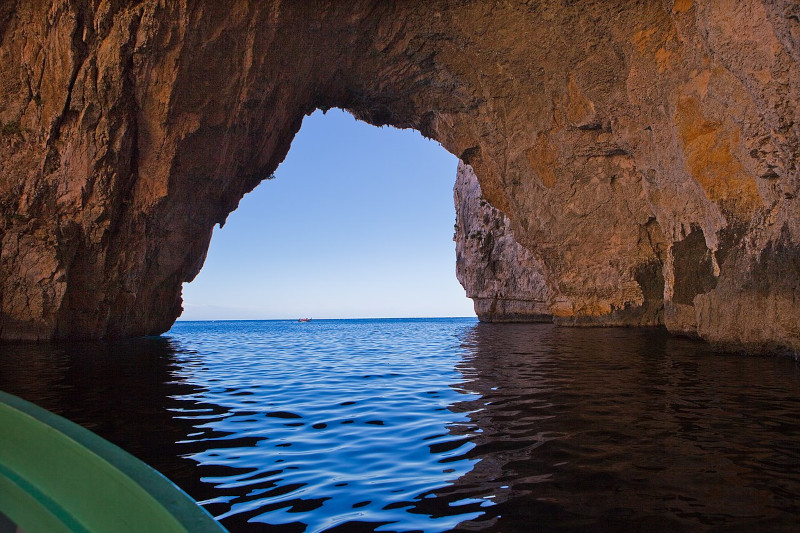Blue Grotto Facts
- This visually stunning site known as the Blue Grotto constitutes an incredibly picturesque naturally occurring sea cave. As if that wasn’t enough charm, the cave also formed in an equally stunning region of the world, renowned for its appeal.
- That’s because this marvel of Nature formed on the island of Capri, in southern Italy, in Europe. It’s well known for its distinctive opening. The magnificent site also remains famous for the unique, naturally occurring blue lighting within the cave.
- That, however, isn’t just a simple matter. That’s because of the fact that it occurs due to a highly specific combination of factors. That’s due to the fact that the grotto remains lit by a unique combination of lighting from two separate sources.
- This site also boasts quite impressive physical measurements, as well. In fact, it extends a distance of roughly 177 ft (54 m) into the cliff. The depth of the cavern also measures about 492 ft (150 m). Amazingly, the bottom of the cavern has a sandy covering.
- The cavern also has another defining characteristic. That’s because the cave has a small entrance. In fact, this measures around 5 ft (1.5 m) in width at the waterline. Yet despite this, the Blue Grotto forms one of the leading tourist attractions on the island.
Related Articles
Blue Grotto Lighting Effects
The breathtaking site rightly known as the Blue Grotto has an impressive illumination consisting of an ethereal brilliant blue lighting. This natural but startling effect occurs due to the presence of dual sources. The first comes from the small entrance at the waterline.
The primary source of lighting, however, actually consists of the remarkable second source situated within its intriguing confines. Amazingly, this source actually consists of a second, naturally occuring hole. This secondary opening further formed directly below the first.
The two structures developed separated by a bar of rock measuring an impressive 6 ft (2 m) thick. The large second hole, though, measures nearly 10 times the size of the upper entrance. Thus, here, an otherwise rare natural occurrence takes place on a regular basis.
That’s because, in this instance, the cave actually receives its primary lighting from below the waterline. In addition, even more wonders await the visitor. That’s true because of yet another quirk of geology that also exists in the cavern involving the lighting effects.
Due to the result of positioning, it’s impossible for a visitor to discern either of three things. These consist of the shape of the underwater hole, the outline of the stone bar, or even the nature of the lighting source. The Blue Grotto thus has an otherwordly ambiance.
Blue Grotto Historical Relevance
Understandably, following its modern discovery, the Blue Grotto quickly became a popular tourist spot in modern times. This primarily occurred following the 1830’s. Evidence indicates, however, that humans knew of the site’s existence as far back as the Roman Age.
That’s because of a relatively recent discovery. Prior to their removal, sculptures from the broad pantheon of Roman deities originally existed in the grotto. Experts also believe that more such statues remain at the bottom of the cave, still waiting to be discovered.
Even more history occurred at this time, however. The Roman Emperor Tiberius also, according to legend, frequented the beautiful site after he retired to Capri. Ongoing research has also uncovered the remains of an ancient man-made landing dating to that era.
Local inhabitants themselves long knew of the grotto, but largely avoided it after the end of the Roman Era, though. In ancient times, this was primarily due to the belief that the Blue Grotto was inhabited by witches and various other mythical, supernatural creatures.
Features Sharing Its Region
Check out our other articles on 6 Mysterious Natural Phenomena, Kakapo, Nyiragongo Volcano, Green Dragontail, Monkey Puzzle Tree, Australian Ghost Shark, Snowy Owl, Hermann’s Tortoise

